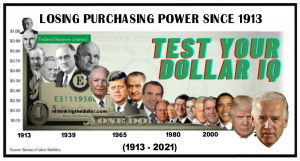There are a few misconceptions about the global economic outlook that I want to set straight. Between historical realities, current trends, and leading indicators there is a lot of room for confusion and outright misinformation. To make matters worse, the daily news flow and war of attention only adds to the obfuscation.

So with my usual style of more charts, less words, more data, less opinion, I want to share with you how I am seeing the data flow and how to reconcile the objectively weak – recessionary – data of the past year, with the unequivocally bullish growth outlook.
And to front-foot the issue, yes coronavirus is a potential tail risk and a current actual headwind, yet it is not the only game in town, and there are already some powerful tailwinds baked in that should see a global synchronized upturn kick-off this year.
Enough talk, let’s get to the charts…
1. Reality Check: the Global Export/Manufacturing Recession
First, as noted, the reality is that 2019 saw the beginning of a global export/manufacturing recession. The chart below shows this fairly clearly (tracking industrial production growth across 61 countries). So I have no debate with the doom-peddlers running around calling for a recession – there is one. I would call it a garden variety recession (remember those? – the 2008 trauma may have conditioned us to expect a global financial collapse every time things get a little shaky, but we call it a once-in-a-lifetime event for a reason). The current recession was triggered by significant and synchronized global monetary policy tightening, with additional “policy tightening” being imposed by the trade war.

What to watch for: outside of the 2008 experience, this is typically about the point where you start to see things trough, the main reason is most of the time you get a policy response and easing of financial conditions. As a side note, the base effects are also relevant – the high base comparators of 2017/18 have passed, and by the time Dec 2020 rolls around the bar for a higher YoY figure will be a lot lower. The other thing to note is that hard data series like those in the chart above are inherently backwards looking and lagging data, if you set these series as your only reference point you are likely to anchor your expectations too optimistic (top of cycle) or too pessimistic (bottom of cycle). And the key word there is cycle.
2. Signs of Stabilization
Before moving into the forward looking indicators, it’s worth a look at the coincident indicators. Economic confidence indicators, while having some forward looking components, tend to provide a good view of the current pulse (whereas the hard data gives you the backward looking aspect). In that respect, the global consumer and business confidence picture is quite informative. Eyeballing the charts below they confirm the recession assertion (big drop in terms of diffusion and level for business confidence – same for consumer, but for the most part the consumer has been relatively resilient through this). On first glance it looks like the turning point is in – economic confidence has stopped deteriorating and started ticking up.

What to watch for: while the hard data provides the reality-check, the economic confidence data provides the progress check, and so-far progress looks good. So personally I am keeping a close eye on these for confirmation (or otherwise) of the dynamics I will lay out in the next few charts.
3. Monetary Stimulus
This is one of my favorite charts, and for good reason. It shows clearly the global synchronized monetary policy tightening of 2018 and the subsequent global policy pivot to easing in 2019. This is what I referenced back in section 1. It’s easy to say too much, so I’ll keep it simple: globally monetary policy settings have gone from headwind to tailwind. That’s a good thing for the growth outlook.

What to watch for: the central banking conversation remains one of caution, and already this year we’ve seen almost a dozen rate cuts (e.g. to name a few: Brazil, South Africa, Malaysia, Thailand, Philippines), and if anything the coronavirus news flow is nudging the tone further to the dovish side (remember, central bankers are people too, and like the rest of us they are trying to make the best policy decisions on the best information they have). So if anything we’re likely to see even more of a tailwind from monetary policy in the coming months and quarters.
4. Especially in Emerging Markets
This is one of my 10 Charts to Watch in 2020, and for good reason, and it’s also a logical follow-on from the previous section. Emerging market central banks have been particularly aggressive and proactive in easing policy (as my composite monetary conditions indicator below shows). EM central banks have much greater traditional policy ammunition, and they have used it. As such my view is the global economic upturn will be led by emerging markets as a cyclical economic upturn gets underway (and we’ve already seen the cycle indicators start to stabilize and turn up there).

What to watch for: while the monetary stimulus tailwind for emerging markets is already baked in, I will be watching over the coming months for any further material efforts (which would add to the bull case and create greater upside/overshoot scope), but especially also tracking the data pulse for confirmation (or otherwise) that “stabilization-to-improvement” goes from improvement to full-blown cyclical economic upturn.
5. Fiscal Policy too
It’s not just monetary policy, fiscal stimulus efforts are increasingly getting air-time both in terms of actual, planned, and possible. The Asian economies have been particularly active in this respect, but the conversation is ongoing in Europe (German fiscal stimulus), and is a distinct possibility for the UK as they move on from Brexit and turn their eyes toward the future (competitive tax cuts, deregulation, and infrastructure investment). Also, in the USA Trump is said to be keen to make further tax cuts a key election issue. So it’s likely that fiscal policy increasingly becomes a tailwind to growth globally as simultaneous stimulus efforts are meted out.

What to watch for: for me it’s a matter of keeping track of current and proposed fiscal stimulus measures… as we know – talk is cheap, so implementation is also important. But if we do start to see more and more fiscal stimulus efforts by some of the larger economies it will add a further tailwind to global growth and likely create upside/overshooting risks (which will bring the discussion back to inflation and rate hikes, but that’s a conversation for a later date!).
6. Cheap Oil
Remember this chart? Everyone had some version of this chart back in 2015/16, and we did see DM GDP growth pickup as cheaper fuel costs flowed through the economy. The reason we didn’t see as significant a growth response back then was that the bursting of the commodity capex bubble (shale oil) presented an offset to the boost that energy consumers got. That will be less of an issue this time around as we’ve already seen a major adjustment there. So I expect the oil rate-of-change tailwind to be more of a net-positive this time around.

What to watch for: obviously lower oil prices will add to the tailwind, but if you take note of the chart above it’s the 18-month rate of change with an 18-month lead, so over the next 12-18 months the tailwind is already ‘baked-in’. Other factors can override and it doesn’t have a perfect track record, but it does help that it aligns with the monetary/fiscal tailwinds which I talked about earlier.
7. Global Trade: Nadir Near
This one comes from the latest Top 5 Charts, and it certainly is a top chart. Firstly, as with the chart in section 1, it shows how global trade growth looks sick, and the red line even points to a worsening of global trade in January …but a rebound into Q2. I would call this chart in its entirety probably one of the best progress-check barometers for the global growth rebound thesis I’ve outlined here. It will show whether global trade growth (the epicenter of the slowdown) overshoots to the downside or whether the multiple tailwinds gain traction. It will also reflect whether the “phase 1” (and beyond) deal begins to help as trade policy headwinds potentially get further reduced. For now it’s signalling an imminent turning point on the horizon.

What to watch for: basically the thing to watch for is going to be to see an end to the global export/industrial production recession. This chart provides early evidence for that. But as high as my conviction is in the global growth rebound thesis, you need to listen to the data, and charts like this help add clarity… so keep watching the charts!
Final Thoughts and Bottom Line
Bottom line: given the global monetary policy pivot in 2019 to easing (particularly in emerging markets), the prospect of further monetary easing (especially in China), planned and actual fiscal stimulus initiatives, cheaper fuel costs, and a trade-war-truce, it’s likely that 2020 sees an end to the global manufacturing/export recession and the start of a global synchronized economic upturn.
As for the wider implications, as I outlined earlier this year in my “10 charts to watch in 2020”, this thesis underpins a lot of the key asset class calls and medium-term core views. For instance, growth/risk assets should do well in an environment of improving global growth, and as it becomes more apparent that growth is improving defensive assets will likely suffer, and in some cases fall in value. Given the likelihood that the turnaround is led by emerging markets, there is a strong case for emerging market equities and commodities.
by Callum Thomas via: Econintersect

RTD 1oz. Round
RTD 5oz. Round











0 Comments